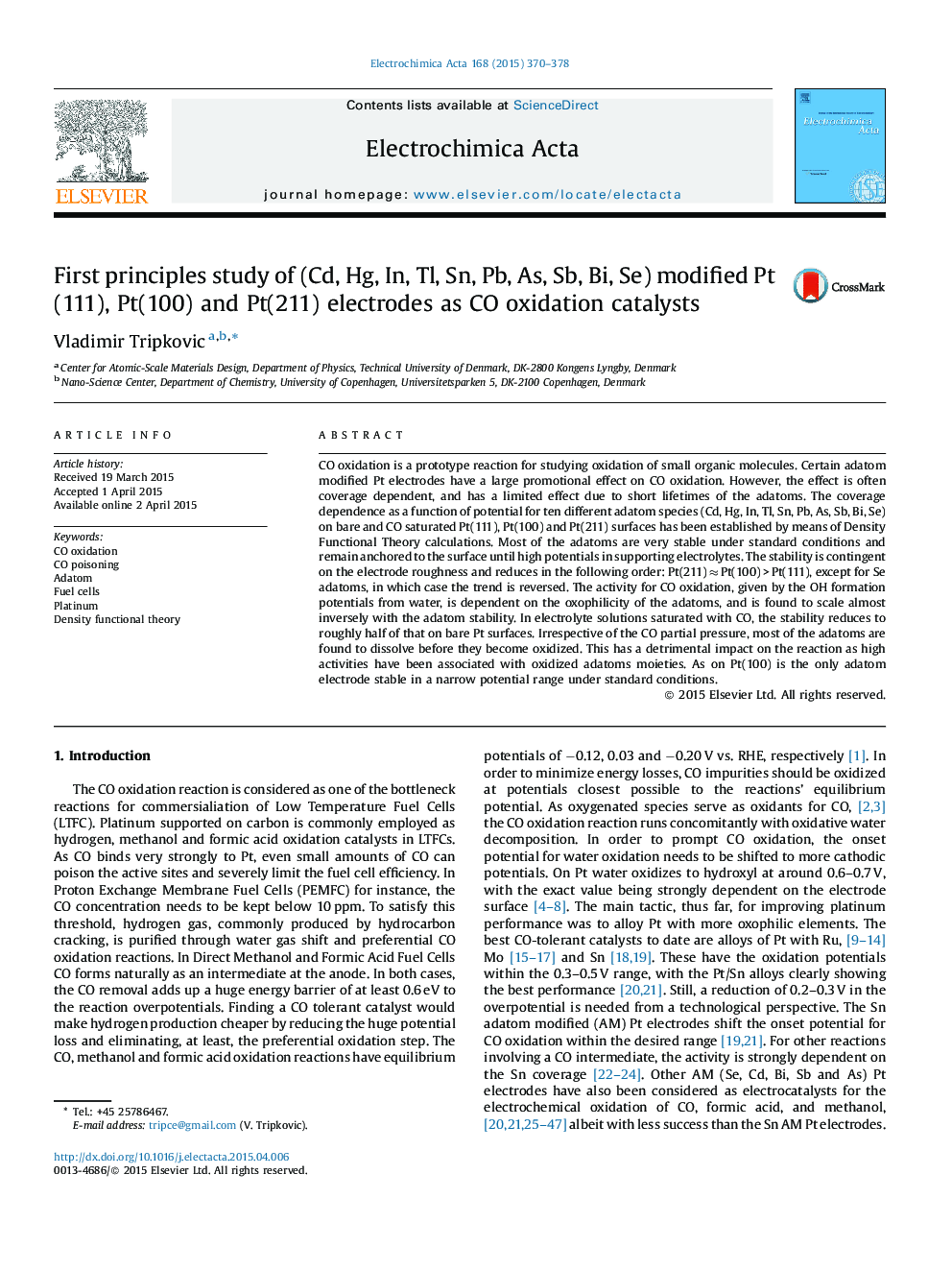| Article ID | Journal | Published Year | Pages | File Type |
|---|---|---|---|---|
| 184257 | Electrochimica Acta | 2015 | 9 Pages |
CO oxidation is a prototype reaction for studying oxidation of small organic molecules. Certain adatom modified Pt electrodes have a large promotional effect on CO oxidation. However, the effect is often coverage dependent, and has a limited effect due to short lifetimes of the adatoms. The coverage dependence as a function of potential for ten different adatom species (Cd, Hg, In, Tl, Sn, Pb, As, Sb, Bi, Se) on bare and CO saturated Pt(111), Pt(100) and Pt(211) surfaces has been established by means of Density Functional Theory calculations. Most of the adatoms are very stable under standard conditions and remain anchored to the surface until high potentials in supporting electrolytes. The stability is contingent on the electrode roughness and reduces in the following order: Pt(211) ≈ Pt(100) > Pt(111), except for Se adatoms, in which case the trend is reversed. The activity for CO oxidation, given by the OH formation potentials from water, is dependent on the oxophilicity of the adatoms, and is found to scale almost inversely with the adatom stability. In electrolyte solutions saturated with CO, the stability reduces to roughly half of that on bare Pt surfaces. Irrespective of the CO partial pressure, most of the adatoms are found to dissolve before they become oxidized. This has a detrimental impact on the reaction as high activities have been associated with oxidized adatoms moieties. As on Pt(100) is the only adatom electrode stable in a narrow potential range under standard conditions.
